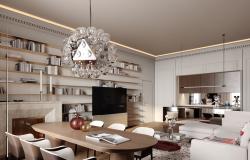 Pablo Picasso's rediscovery of the joys of life and a fresh artistic vein after WWII is the focus of a new exhibition at Venice's Palazzo Grassi.
Pablo Picasso's rediscovery of the joys of life and a fresh artistic vein after WWII is the focus of a new exhibition at Venice's Palazzo Grassi.
After gloomy, symbolic wartime works like his celebrated Guernica fresco, the 20th-century's most famous artist found a new muse, Francoise Gilot, and a new arena for his creative genius, Castello Grimaldi at Antibes on the French Riviera.
The show, which takes its name from a colourful celebration of life called Joie de Vivre, spans three of the happiest years of Picasso's life, from 1945 to 1948. Buoyed by the Cote d'Azure's vibrant colours and hedonistic atmosphere, Picasso created great paintings, drawings and ceramics that gave free rein to his prodigious imagination.
Living with the 25-year-old painter Gilot, who later gave him two children, Claude and Paloma, the 65-year-old rediscovered physical passion which he poured into erotic works presenting his new self-image as a priapic bull. The exhibition ranges from intense human figures to playful still lifes, dainty fauns and dramatic bull fights, in which Picasso's palette uses every colour imaginable.
Many of the 250 works come from the municipal museum of Antibes but others from some of the world's major public and private collections including that of the Grassi's owner, French luxury goods magnate Francois Pinault. "It's a joyous phase of the artist's life, his return to the Mediterranean, to light, love and sea," said the Grassi's director, Jean Jacques Aillagon.
The exhibit also features a large selection of photos capturing Picasso in his studio, thinking, painting and posing beside his work.
Picasso, la Joie de Vivre 1945-1948, runs at the Palazzo Grassi until March 11, 2007.









